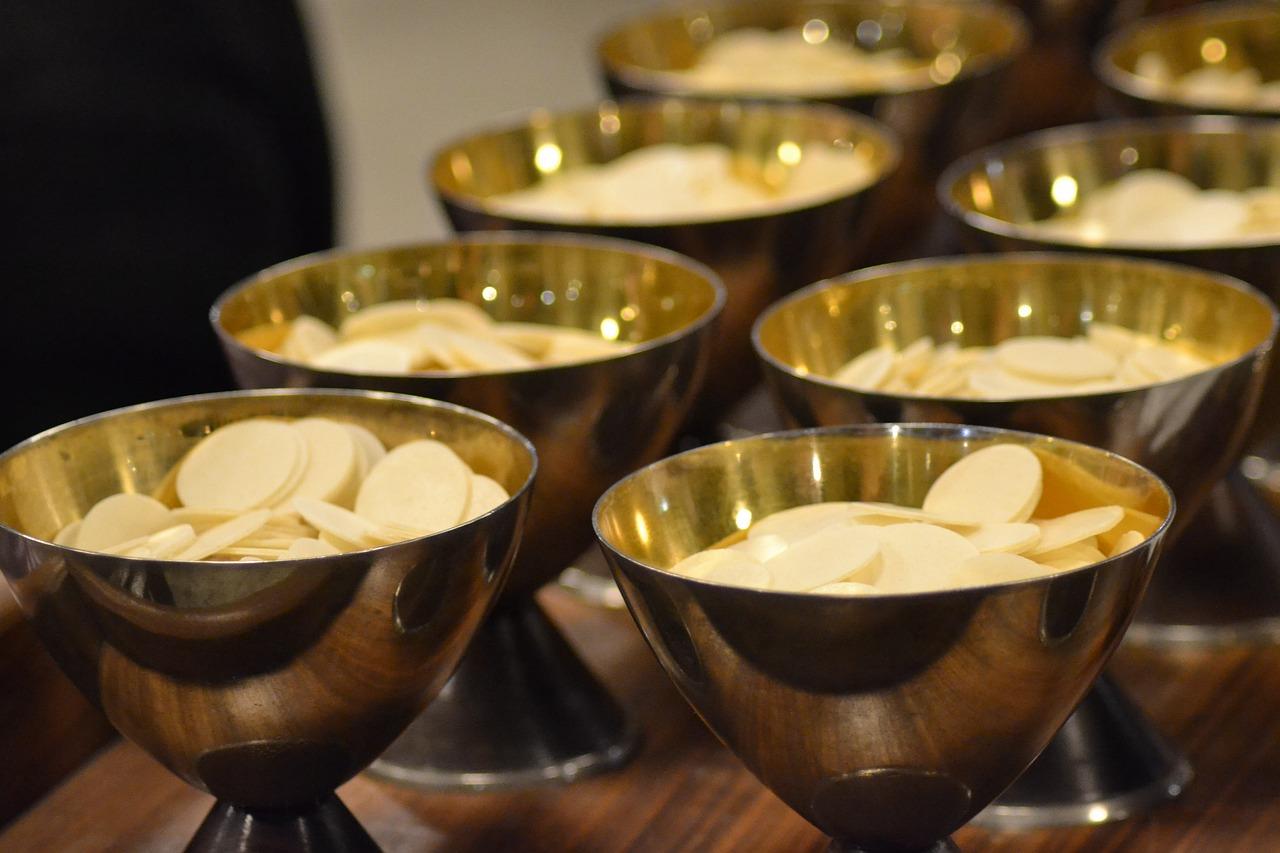LEICESTER, United Kingdom – Do you kneel when you receive Communion at Mass?
I don’t really care, except for the fact the question has become the latest battle in a decades-old culture war in the Catholic Church. In these situations, I get paid to care.
Last week, Cardinal Blase Cupich of the Archdiocese of Chicago wrote a letter urging Catholics to stand while receiving Communion during Mass, as opposed to kneeling.
The cardinal said “the norm established by [the] Holy See for the universal Church and approved by the U.S. Conference of Catholic Bishops is for the faithful to process together as an expression of their coming forward as the body of Christ and to receive holy Communion standing.”
“Certainly reverence can and should be expressed by bowing before the reception of Holy Communion, but no one should engage in a gesture that calls attention to oneself or disrupts the flow of the procession,” he added.
Cupich’s letter was immediately countered on social media.
Dr. Joseph Shaw, President of Una Voce International, told the conservative LifeSiteNews it was “difficult to interpret Cardinal Cupich’s remarks, since bowing before receiving Holy Communion is so rare that those doing it, in accordance with liturgical law, will certainly draw attention to themselves, and it is difficult to see how it is possible to bow without disrupting the flow of the procession.”
“Easier to accomplish, in fact, is kneeling to receive Holy Communion, and receiving on the tongue,” he said.
On the other side, you can find Austen Ivereigh, who on X – formerly Twitter – saying Cupich’s document is an “important letter.”
The British Catholic journalist says the cardinal’s letter is “against [the] fashion of some [people] throwing themselves down or kneeling when receiving Communion, because it is more ‘reverent’. It is showy and disrupts what is, he says, a liturgical procession of the faithful.”
If you search online, you can some priests pointing out their parishes have altar rails and primarily people receive the Eucharist kneeling and on the tongue, while other priests speak about how it makes it harder for them to give communion to those who kneel.
At my usual parish outside the city of Leicester in England, most receive standing, although the priest also gives communion to those who prefer to kneel. However, the main parish in the city center has an altar rail, and most parishioners kneel – although the priest also gives communion to those who prefer to stand.
As I said at the start, I don’t really care. I generally receive standing at the town parish, and receive kneeling at the city center parish.
Again, this culture war has been going on for decades – and there are winners and losers after each battle. Cupich himself followed Cardinal Francis George, who was probably considered more conservative.
Many parishes see a new priest every 5 or 10 years, each coming in with their own views and opinions on what a “proper Mass” looks like.
And these are often strong opinions!
But the people in the pews usually don’t have an opinion at all.
What they do have is a habit. They are usually used to praying in a certain way; celebrating Mass in a certain way; and often want to sit in the same seat at every service. They certainly don’t want to go to Mass and be told what they are doing is wrong, especially after the last guy told them what they are now being asked to do is wrong. It’s like getting whiplash.
Of course, a new priest will say he is giving good catechesis, and explaining why the changes are being made, and why it is important, and he is doing it slowly so it isn’t jarring for the congregation … and, “Why aren’t you paying attention?” Maybe adding, “Listen more carefully!”
Here’s an important question that needs to be asked: Why do people go to Mass?
Some because they love Jesus, and really love a nice liturgy. Others love Jesus, and are somewhat indifferent about the liturgy. Some go because it’s a rule from their parents or because their spouse forced them. A few might attend because they happened to pass the church and saw a worship service was happening. Some are there because their life is falling apart, and they have nowhere else to go. A lot are there but don’t really know why.
These culture wars in the Church are being fought by a Caste of “professional Catholics” – clergy and religious, professors, and – I raise my hand here – journalists. Like most wars, the issues may be important, but there are innocent victims. In this case, it’s the average parishioner.
The war is unlikely to end soon, but the Church should try harder to keep the non-combatants out of the fray.
Follow Charles Collins on X: @CharlesinRome
















